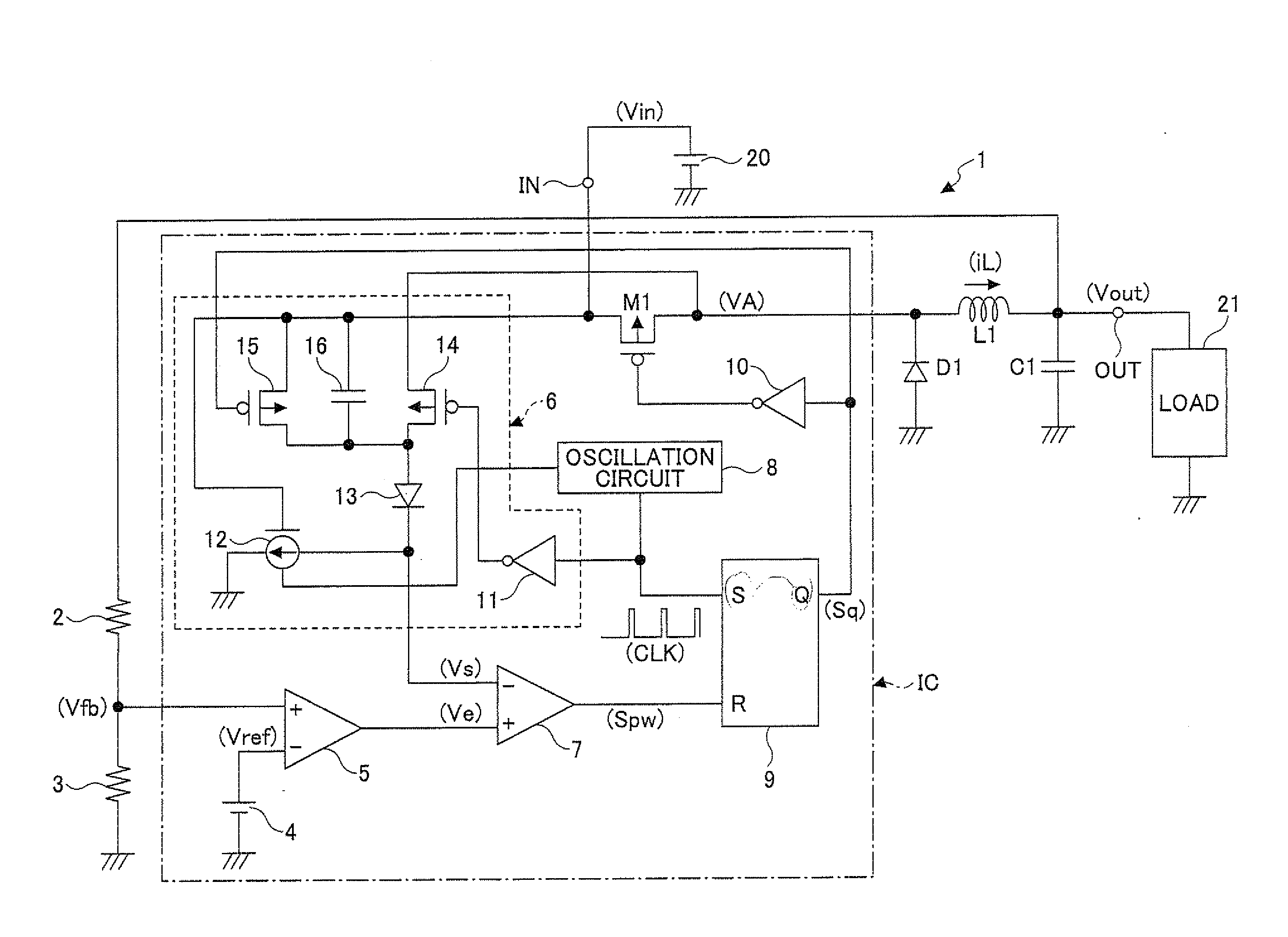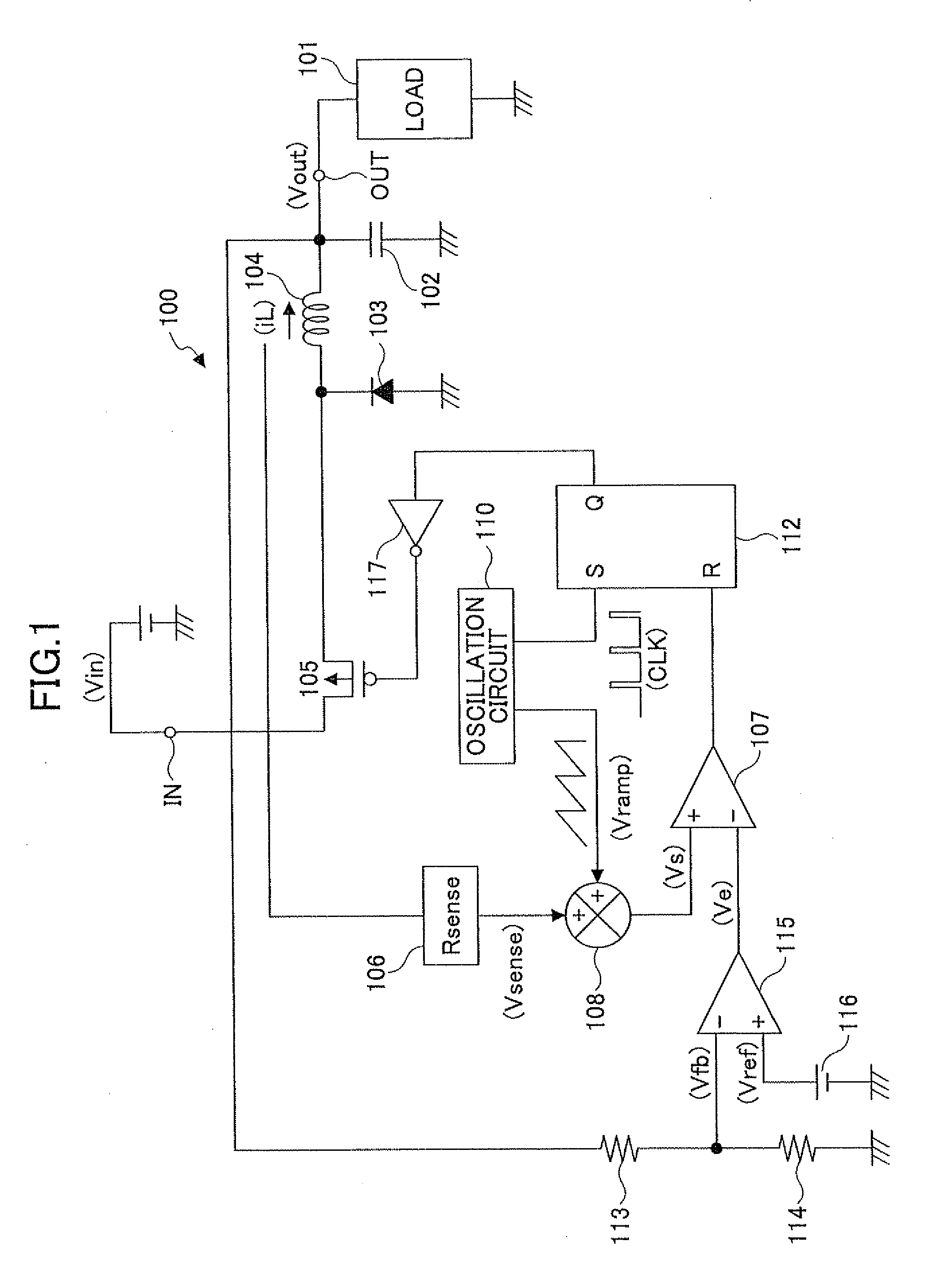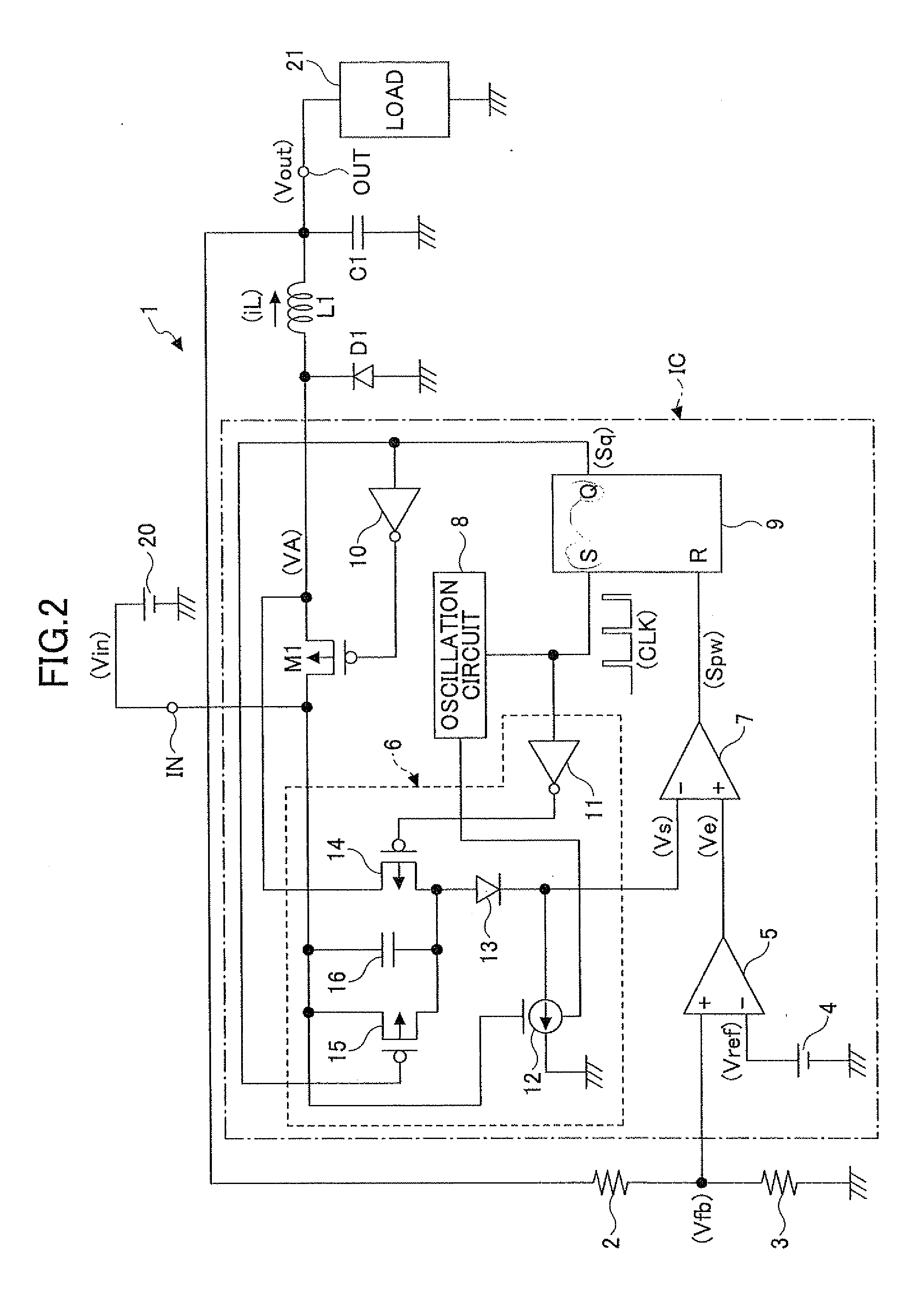Current-mode control switching regulator and operations control method thereof
a switching regulator and operation control technology, applied in the direction of dc-dc conversion, power conversion systems, instruments, etc., can solve the problems of subharmonic oscillation and go out of control, the phase compensation of an error amplification circuit which amplifies the voltage difference between the output voltage and the reference voltage becomes complicated, and the response speed to fluctuation in output voltage is slow. , to achieve the effect of suppressing fluctuation in frequency characteristics, preventing subharmonic oscillation, and wide variabl
- Summary
- Abstract
- Description
- Claims
- Application Information
AI Technical Summary
Benefits of technology
Problems solved by technology
Method used
Image
Examples
first embodiment
[0032]FIG. 2 is a circuit diagram showing a circuit example of a current-mode control switching regulator according to a first embodiment of the present invention.
[0033]The current-mode control switching regulator (hereinafter referred to as a switching regulator) 1 shown in FIG. 2 constitutes a step-down switching regulator that steps down an input voltage Vin input from a DC power supply 20 to an input terminal IN to a predetermined constant voltage and outputs the stepped input voltage from an output terminal OUT to a load 21 as an output voltage Vout.
[0034]The switching regulator 1 has a switching transistor M1 that is composed of a PMOS transistor for controlling the output of a current from the input terminal IN; a rectifying diode D1; an inductor L1; a smoothing capacitor C1; and output voltage detecting resistors 2 and 3 that divide the output voltage Vout and generate and output a divided voltage Vfb. In addition, the switching regulator 1 has a reference voltage generation...
second embodiment
[0071]Although the first embodiment describes the step-down switching regulator as an example, the present invention can also be applied to a step-up switching regulator, which is described as a second embodiment below.
[0072]FIG. 5 is a circuit diagram showing a circuit example of a current-mode control switching regulator according to the second embodiment of the present invention. Note that in FIG. 5, parts the same as or similar to those of FIG. 2 are denoted by the same reference numerals.
[0073]The switching regulator 1a shown in FIG. 5 constitutes the step-up switching regulator that converts an input voltage Vin input from a DC power supply 20 to an input terminal IN to a predetermined constant voltage and outputs the stepped input voltage from an output terminal OUT to a load 21 as an output voltage Vout.
[0074]The switching regulator 1a has a switching transistor M11 that is composed of a NMOS transistor; a rectifying diode D11; an inductor L1; a smoothing capacitor C1; and o...
PUM
 Login to View More
Login to View More Abstract
Description
Claims
Application Information
 Login to View More
Login to View More - R&D
- Intellectual Property
- Life Sciences
- Materials
- Tech Scout
- Unparalleled Data Quality
- Higher Quality Content
- 60% Fewer Hallucinations
Browse by: Latest US Patents, China's latest patents, Technical Efficacy Thesaurus, Application Domain, Technology Topic, Popular Technical Reports.
© 2025 PatSnap. All rights reserved.Legal|Privacy policy|Modern Slavery Act Transparency Statement|Sitemap|About US| Contact US: help@patsnap.com



